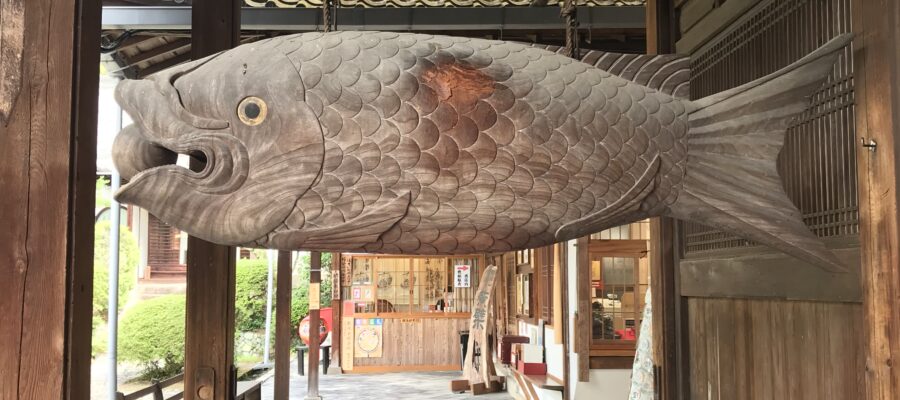江戸時代に入ってきた新しい禅宗、黄檗宗
高校の日本史で学びますが、江戸時代に大陸から新しく入ってきた仏教の宗派、黄檗宗のお寺が京都の宇治市にあります。訪問してみると、総門の形からして、なんとなく異国情緒を感じないでしょうか。ちなみに黄檗宗は日本に入ってきた3つの禅宗の一つです。(他の2つは、臨済宗と曹洞宗。)
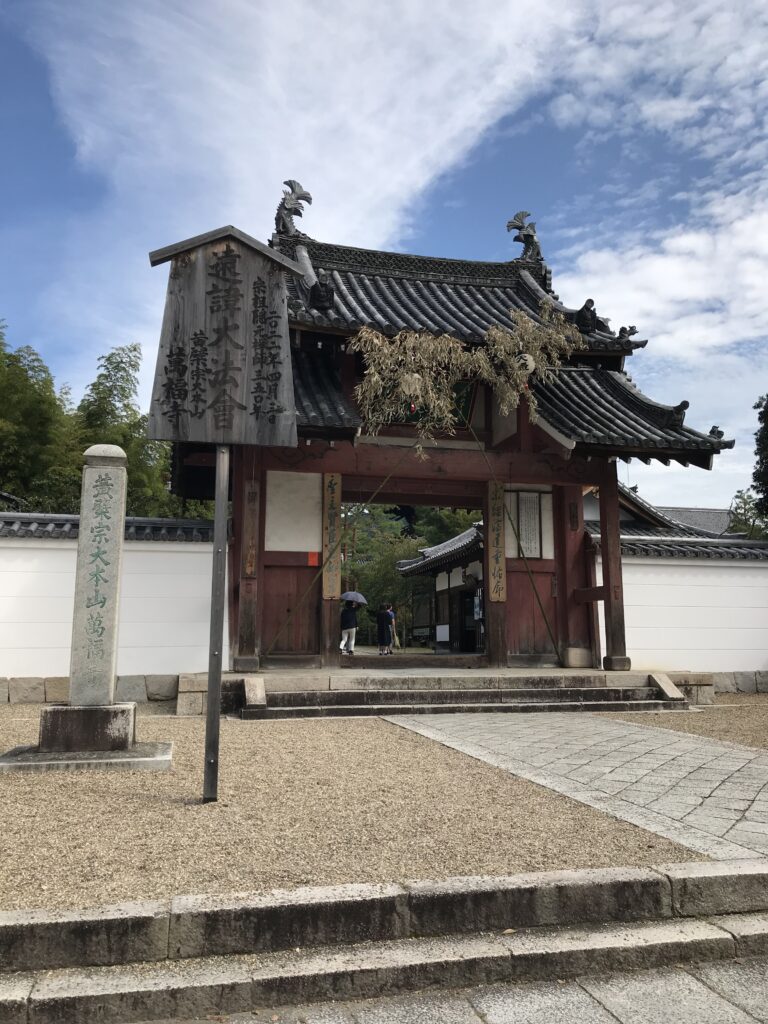
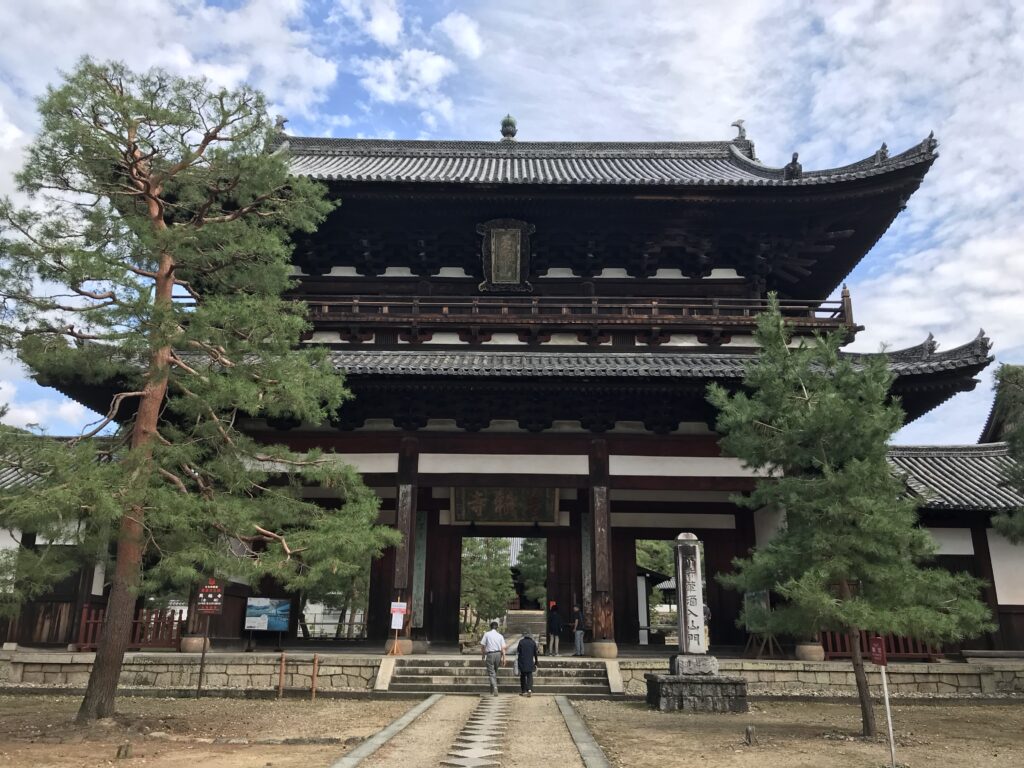
中国風の寺院
境内には正方形の石を45度傾けて連ねた道が、訪問者を寺の奥までいざなってくれます。この文様は、龍の背ビレのようにも見え、寺院ではよく見かけるデザインです。ここは、中国福建省から渡来した隠元(インゲン)禅師が1661年開かれたお寺です。
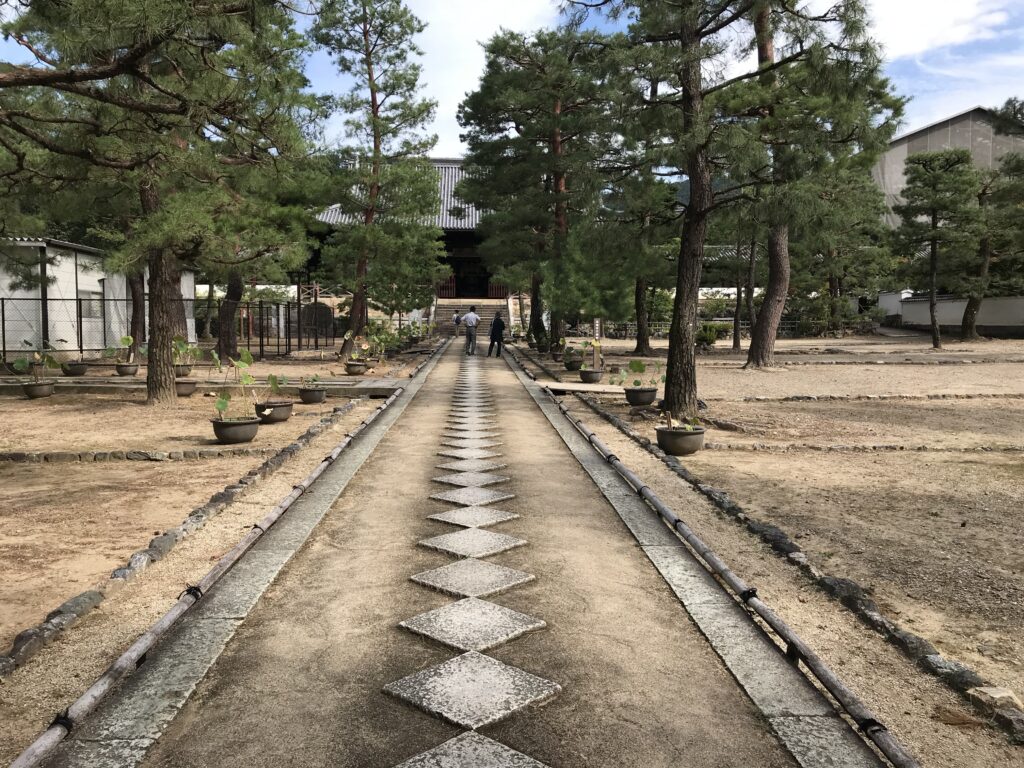
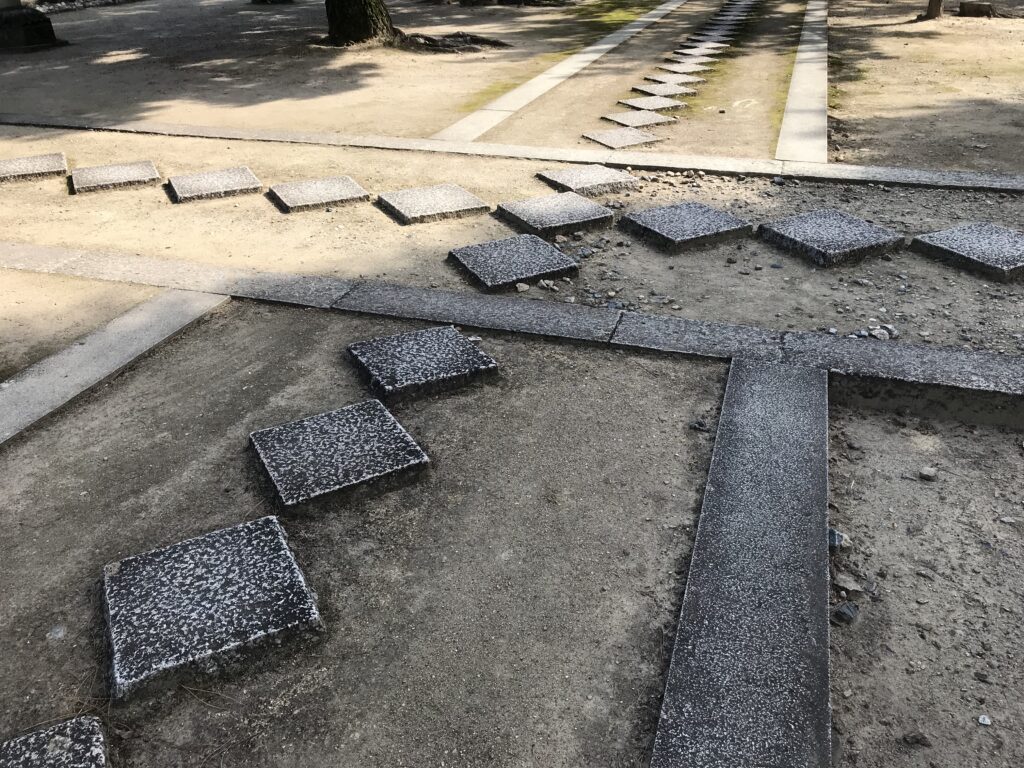
ですので、ここかしこに中国風のものが見当たります。最初にお参りした天王殿には金色の布袋尊がどっかりと座ってお迎えしてくれます。日本の七福神にも含まれる布袋さんなので、親しみがありますが、もし、布袋さんを初めて見る外国人がいたら、この像が崇拝のたいしょうであることに驚いたかも知れません。時を知らせるために使われる開版が魚の形をしているなど、ユニークなものが多いです。
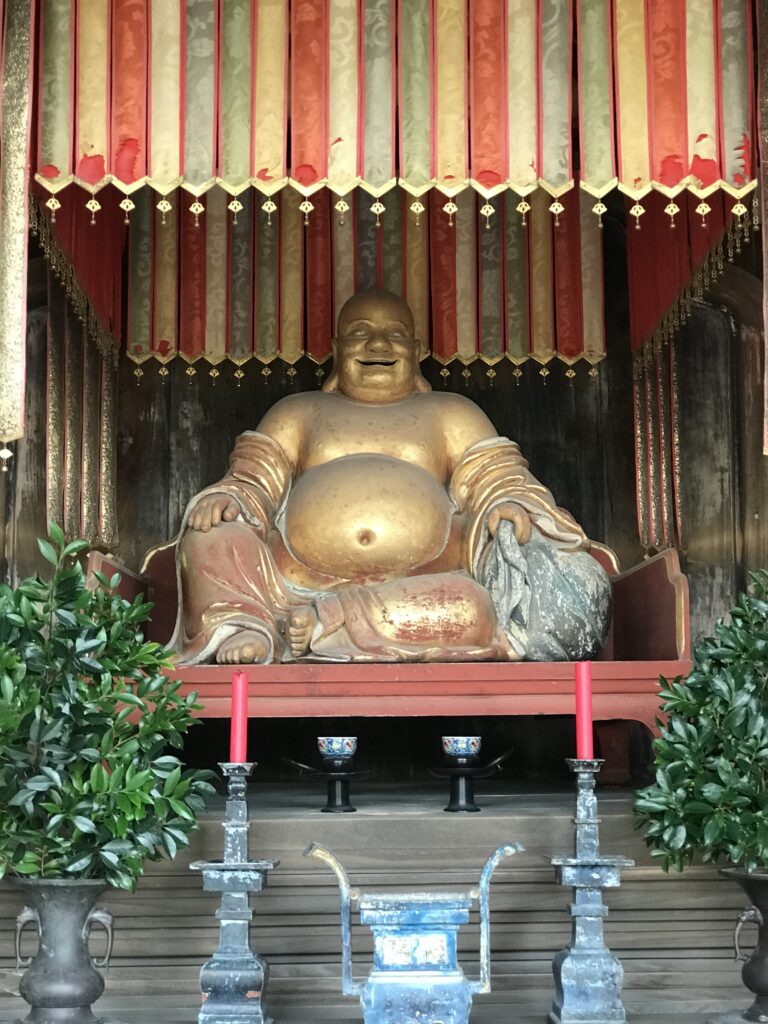
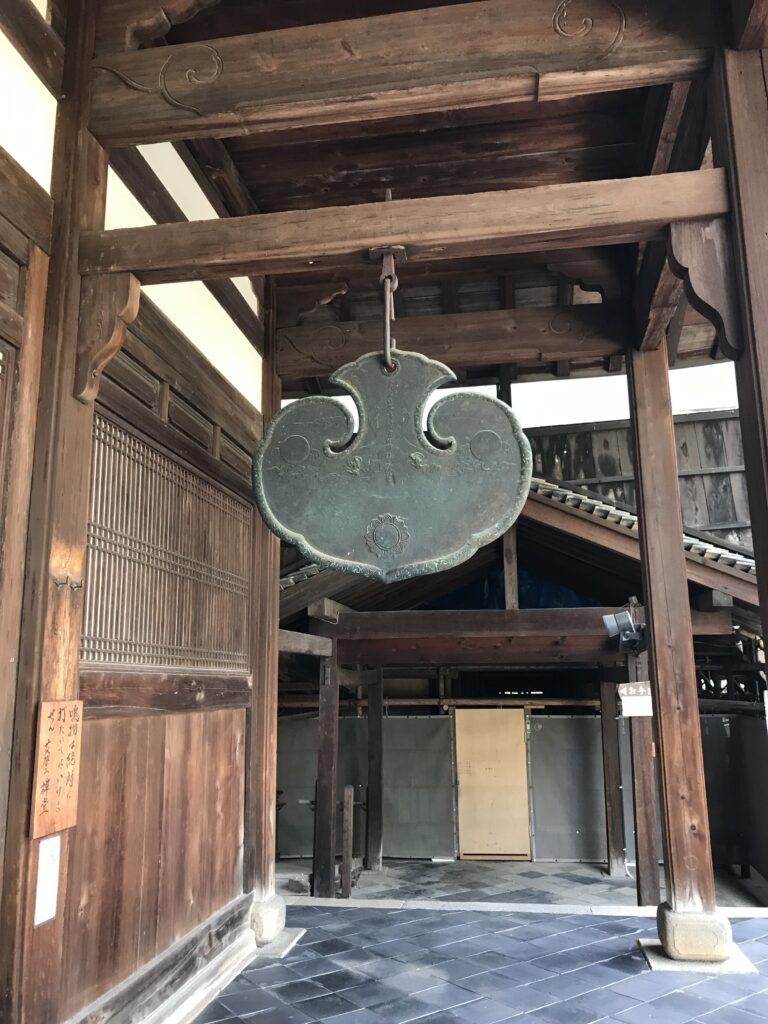
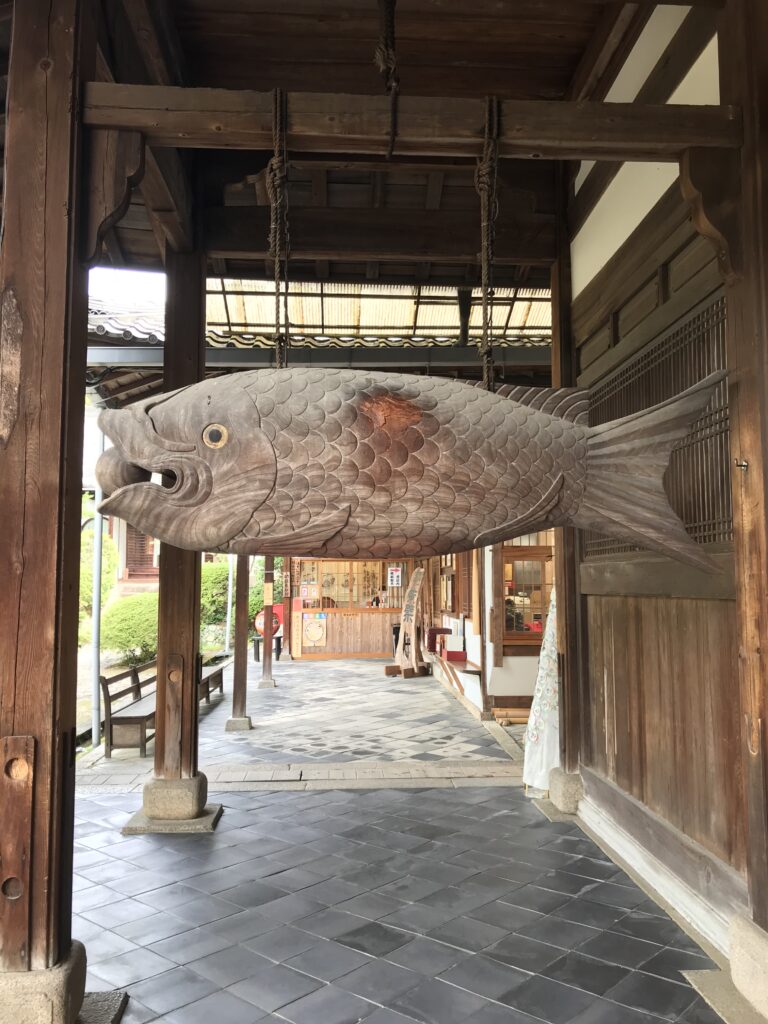
大きな木魚
本殿にあたる、大雄宝殿に祀られている釈迦牟尼仏は、中国風に見えます。大きな木魚も置かれていました。木魚はなぜ魚の形なのか?これも諸説あると思いますが、ガイドの方はどれか一つ覚えておいてください。私は、魚は目を開けたまま眠るので、それだけ勤勉なものの例えで、仏教を学ぶものも魚に倣うよう、魚の形になったと聞いたことがあります。
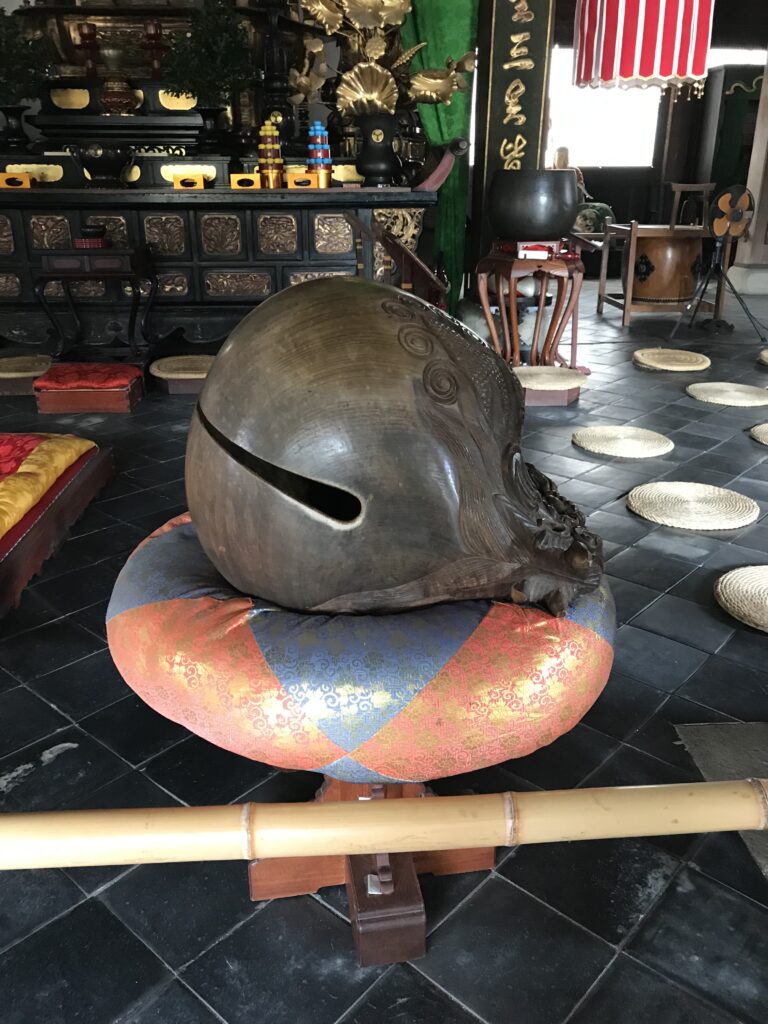
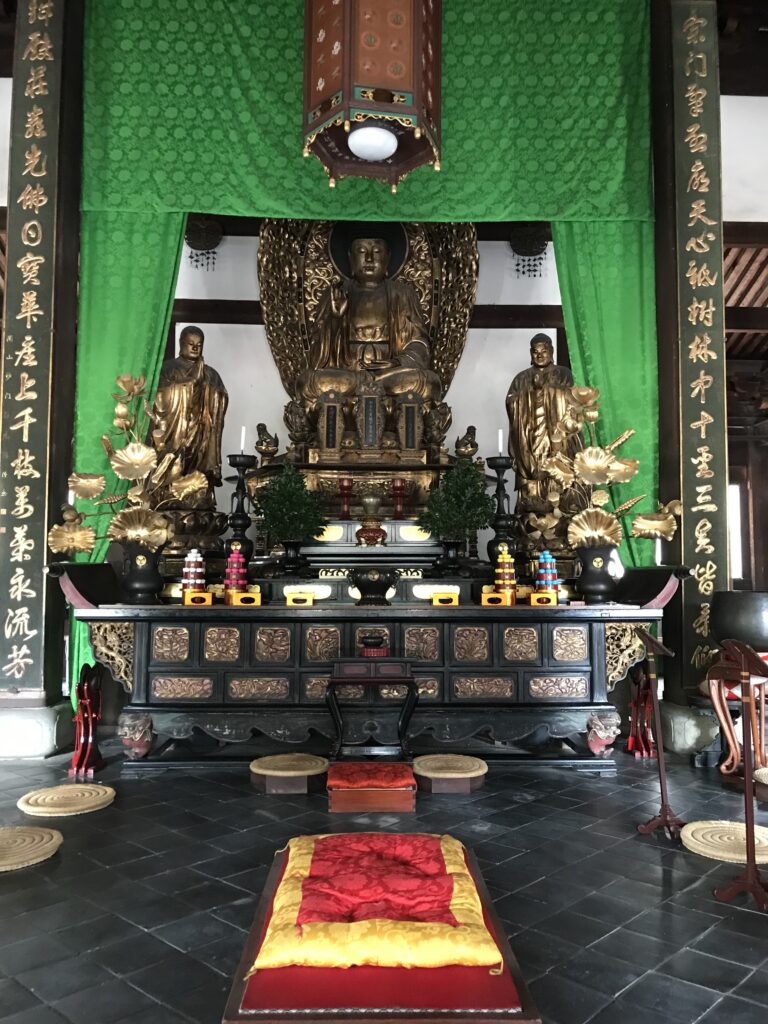
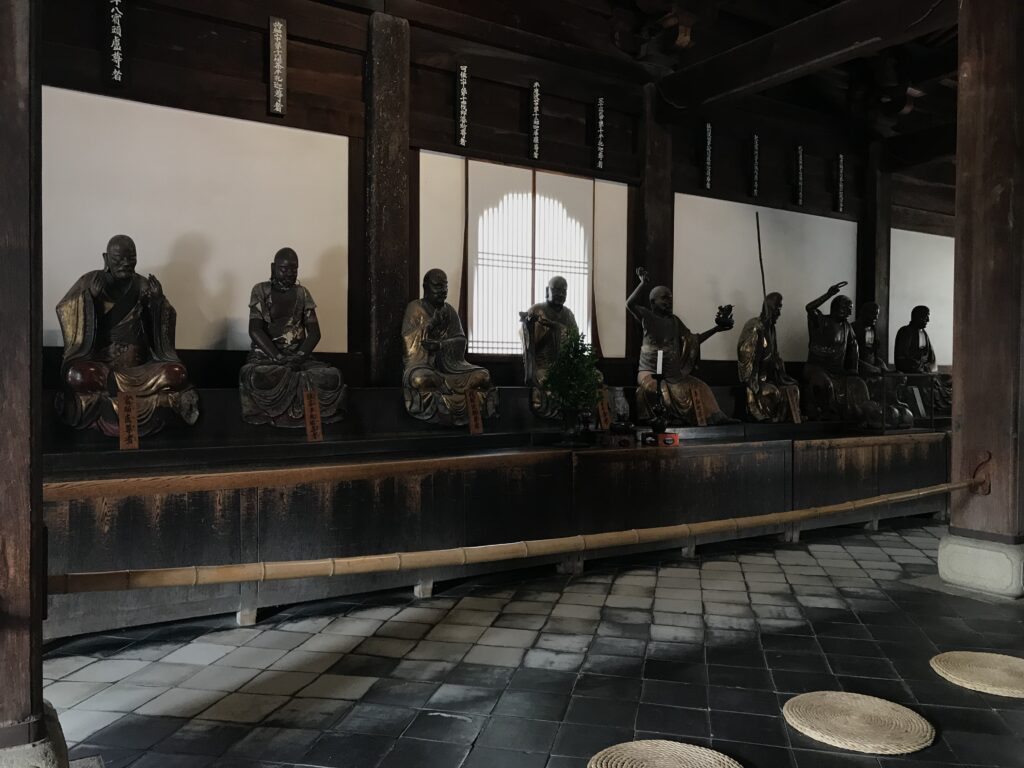
建物の勾欄に使われているデザインは、卍や卍くずしの文様になっています。卍崩しは法隆寺でも見ることができるデザインですが、ここではより大きくデザインされているので、その形を理解しやすいです。
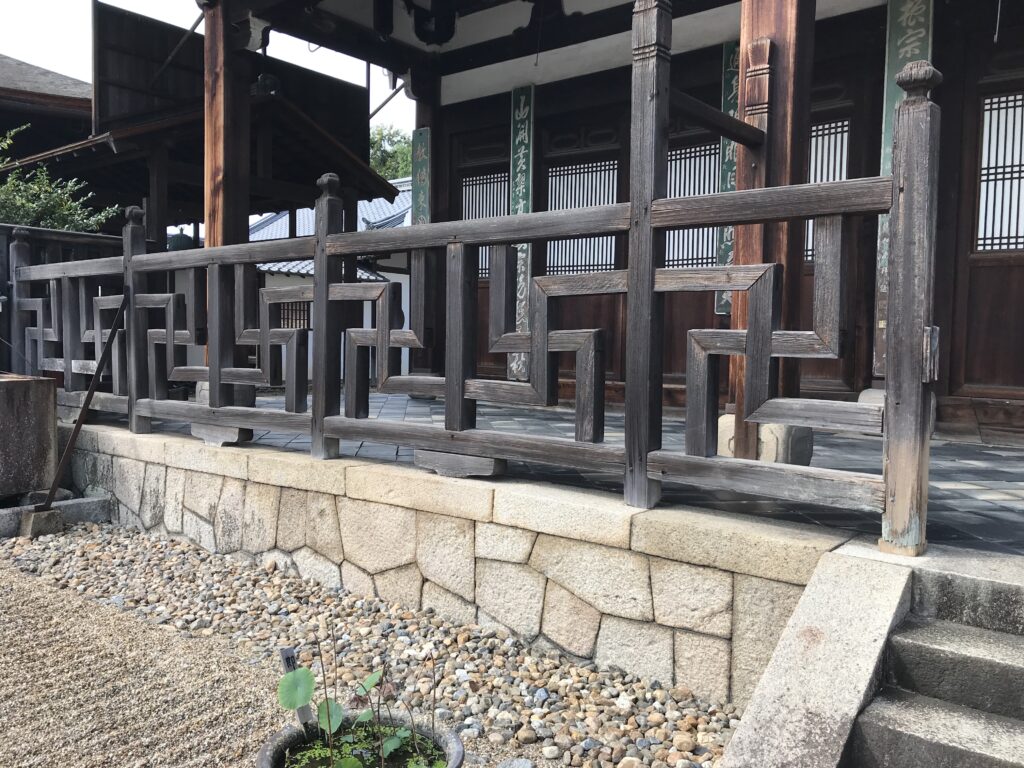
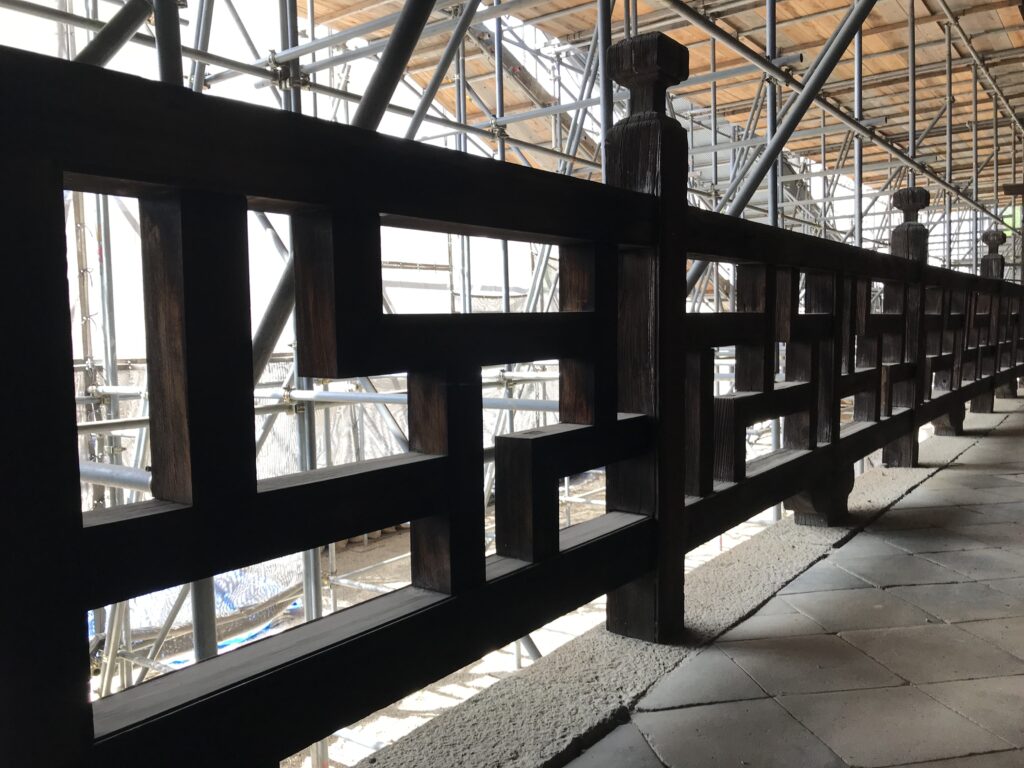
まだ、トライしていないのですが、中華風の精進料理も事前予約をして頂くことができます。インゲンさんはインゲン豆や煎茶を日本にもたらした人でもあります。庭もありますが、中国風というよりも、こちらは日本風だと思います。他の寺とは雰囲気が異なりますので、一度ご訪問いただくと面白いと思います。(完)
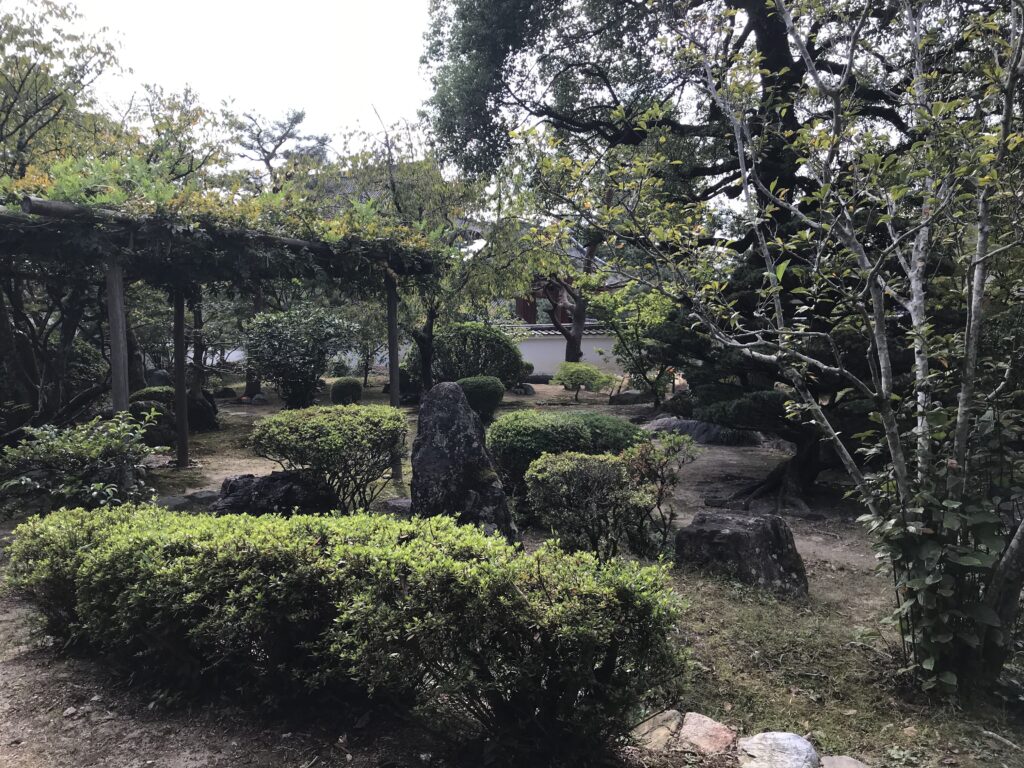
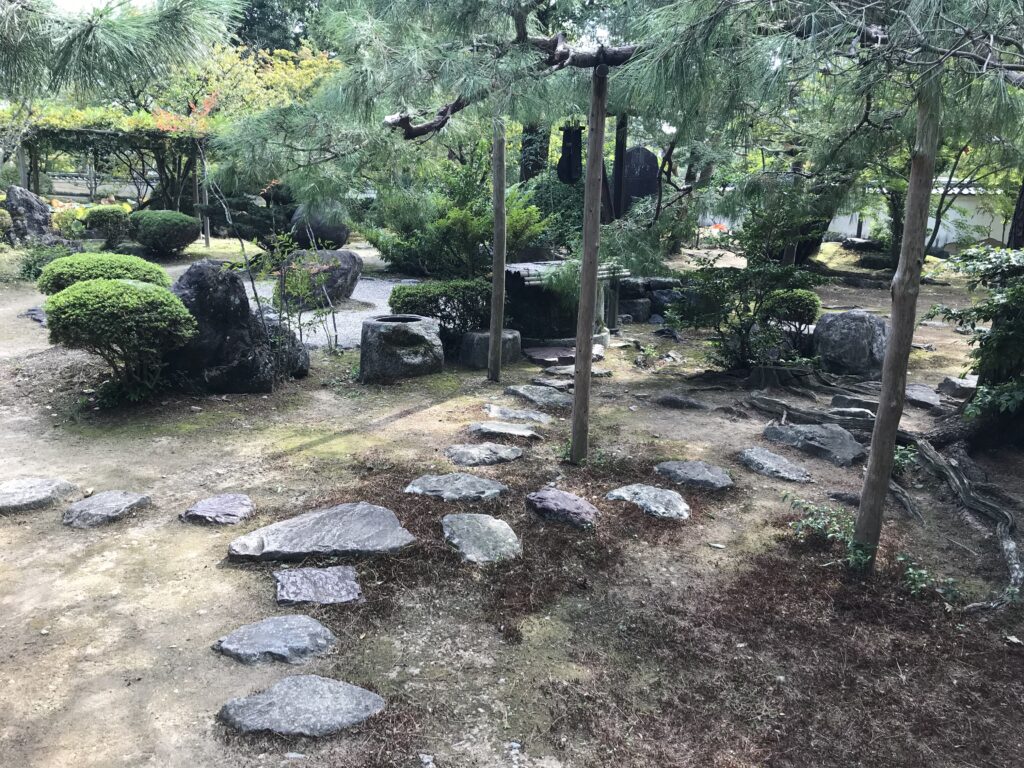
萬福寺の御朱印
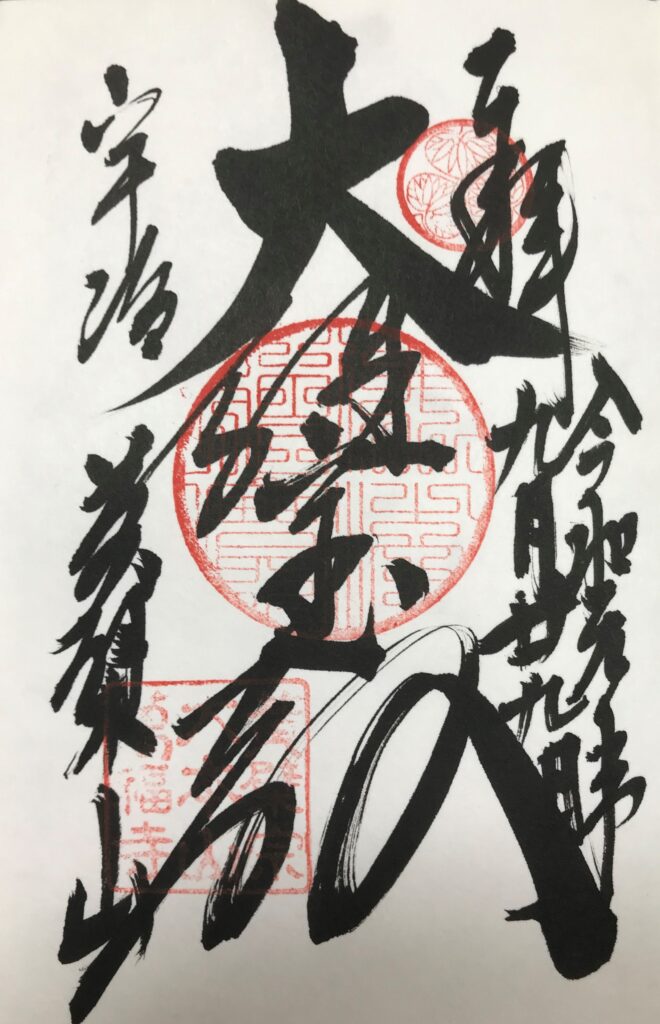
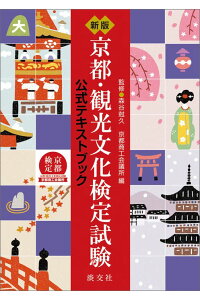
新版 京都・観光文化 検定試験 公式テキストブック 公式テキストブック [ 京都商工会議所 ]
価格:2,420円
(2021/9/11 14:06時点)
感想(5件)
Manpukuji Temple
As you learn in high school Japanese history classes, there is a temple in Uji City, Kyoto, that belongs to the Ōbaku school of Buddhism, a sect that was newly introduced from the continent during the Edo period (1603-1868). When you visit the temple, you may feel a somewhat exotic atmosphere from the shape of the main gate. The Obaku sect is one of the three Zen sects that came to Japan. (The other two are the Rinzai and Soto sects.)
A path of square stones, tilted at a 45-degree angle, leads visitors deep into the temple grounds. This pattern looks like the back of a dragon, a design often seen in Zen temples. This temple was founded in 1661 by Zen Master Ingen, who came from Fujian Province, China.
The temple is located in the center of the city, so you can see Chinese-style objects here and there. The first temple I visited was Tennoden, where a golden statue of Hotei (the goddess of good fortune) sits in a large, welcoming position. Hotei is familiar to visitors because he is one of the seven gods of good fortune in Japan, but if a foreigner were to see Hotei for the first time, he or she might be surprised to learn that this statue is the object of worship. It is unique in many ways, such as the open-ended plate used to announce the time, which is in the shape of a fish.
The Shakyamuni Buddha enshrined in the Daeungpoden, the main hall of the temple, looks Chinese. A large wooden fish was also placed. Why is the fish shaped like a fish? There are many theories about this as well, but the guide should keep one of them in mind. I have heard that fish sleep with their eyes open, which is an example of how diligent they are, and that those who study Buddhism also took on the shape of a fish so as to follow in their footsteps.
The design used on the building’s graffiti columns is a swastika or swastika-kuzushi pattern. The swastika kuzushi design can also be seen at Horyu-ji Temple, but here the design is larger, making it easier to understand its shape.
Although I have not tried it yet, Chinese-style vegetarian dishes can also be had with advance reservations. Ingen-san is also the person who brought green beans and sencha tea to Japan. There is also a garden, but rather than Chinese style, this is Japanese.
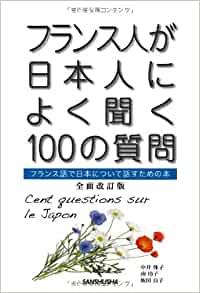
フランス人が日本人によく聞く100の質問全面改訂版 フランス語で日本について話すための本 [ 中井珠子 ]
価格:2,640円
(2022/1/3 17:33時点)
感想(0件)
Le temple Manpukuji
Comme on l’apprend dans les cours d’histoire du Japon au lycée, il existe un temple dans la ville d’Uji, à Kyoto, qui appartient à l’école bouddhiste Ōbaku, une secte nouvellement introduite du continent pendant la période Edo (1603-1868). Lorsque vous visitez le temple, vous pouvez ressentir une atmosphère quelque peu exotique à partir de la forme de la porte principale. La secte Obaku est l’une des trois sectes zen qui sont arrivées au Japon. (Les deux autres sont les sectes Rinzai et Soto).
Un chemin de pierres carrées, inclinées à un angle de 45 degrés, conduit les visiteurs dans les profondeurs du temple. Ce motif ressemble au dos d’un dragon, un motif que l’on retrouve souvent dans les temples zen. Ce temple a été fondé en 1661 par le maître zen Ingen, qui venait de la province de Fujian, en Chine.
Le temple est situé au centre de la ville, vous pouvez donc voir des objets de style chinois ici et là. Le premier temple que j’ai visité est le Tennoden, où une statue dorée de Hotei (la déesse de la bonne fortune) est assise dans une position large et accueillante. Hotei est familière aux visiteurs car elle est l’un des sept dieux de la bonne fortune au Japon, mais si un étranger voyait Hotei pour la première fois, il pourrait être surpris d’apprendre que cette statue est l’objet du culte. Elle est unique à bien des égards, comme la plaque à extrémité ouverte utilisée pour annoncer l’heure, qui a la forme d’un poisson.
Le Bouddha Shakyamuni enchâssé dans le Daeungpoden, la salle principale du temple, a un aspect chinois. Un grand poisson en bois a également été placé. Pourquoi le poisson a-t-il la forme d’un poisson ? Il existe de nombreuses théories à ce sujet, mais le guide doit en garder une en tête. J’ai entendu dire que les poissons dorment les yeux ouverts, ce qui montre à quel point ils sont assidus, et que ceux qui étudient le bouddhisme ont également pris la forme d’un poisson afin de suivre leurs traces.
Le motif utilisé sur les colonnes graffiti du bâtiment est une svastika ou un motif svastika-kuzushi. Le motif svastika-kuzushi est également visible au temple Horyu-ji, mais ici le motif est plus grand, ce qui permet de mieux comprendre sa forme.
Bien que je ne l’aie pas encore essayé, des plats végétariens de style chinois peuvent également être dégustés sur réservation. Ingen-san est également la personne qui a introduit les haricots verts et le thé sencha au Japon. Il y a aussi un jardin, mais il n’est pas de style chinois, mais japonais.
